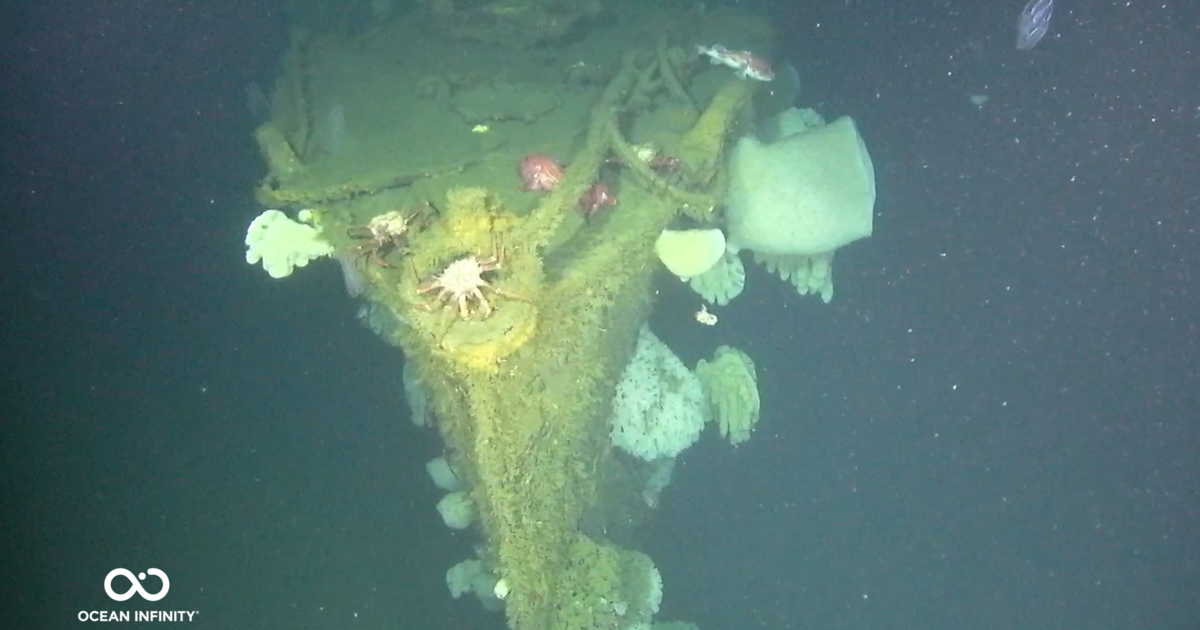The discovery of the USS Stewart, a U.S. Navy destroyer with a unique and storied past, has captivated historians and maritime archaeologists alike. This vessel, once dubbed the “Ghost Ship of the Pacific,” served during World War II under both the American and Japanese flags, before ultimately being sunk as a target ship in 1946. Its location remained a mystery for nearly eight decades, until a recent collaborative effort, utilizing cutting-edge underwater technology, finally located the wreck on the ocean floor off the coast of Northern California. This remarkable find sheds light not only on the ship’s fascinating history but also provides invaluable insights into naval architecture and the complexities of the Pacific War.
The Intriguing History of the USS Stewart
The USS Stewart’s journey was anything but ordinary. Initially serving in the U.S. Navy’s Asiatic Fleet, it was stationed in Manila and saw action in the early months of World War II. Damage sustained during combat in February 1942, coupled with a fortuitous—or perhaps unfortunate—accident that trapped it in a repair drydock in Java, led to its abandonment as Japanese forces advanced. This abandonment was far from the end of its service, however.
Capture and Service Under the Japanese Flag
Ironically, the USS Stewart was subsequently pressed into service with the Imperial Japanese Navy, operating as a patrol boat. Allied pilots witnessed its operations in Japanese waters, contributing to its notoriety as the “Ghost Ship of the Pacific.” This unusual shift in allegiance makes it a significant artifact of the war, demonstrating the fluidity and unexpected twists of military engagements. The ship’s capture and repurposing highlight the shifting tides of the war and the resourcefulness of both sides.
Return to the United States Navy and Final Demise
Following the war, the USS Stewart was remarkably rediscovered in Kure, Japan. It was recommissioned into the U.S. Navy and towed back to San Francisco. In a final, fitting act, it served as a target ship before being deliberately sunk during naval exercises off the Northern Californian Coast in 1946. While its demise was intentional, the precise location of the wreck remained elusive for decades.
The Technological Marvel Behind the Discovery
Locating the USS Stewart after 78 years submerged was a significant feat, requiring sophisticated technology and a collaborative effort. The discovery was made possible by a partnership between the Air/Sea Heritage Foundation, NOAA’s Office of National Marine Sanctuaries, the Naval History and Heritage Command, Ocean Infinity, and SEARCH, a global maritime archaeology organization.
Autonomous Underwater Vehicles and Sonar Technology
Ocean Infinity deployed three autonomous underwater vehicles (AUVs) during the search mission. These unmanned submersibles spent 24 hours meticulously scanning the designated area. The AUVs generated immense amounts of sonar data, and reviewing that data revealed a clear image of the sunken ship at a depth of 3,500 feet. This technological achievement was instrumental to locating the vessel which remained hidden despite several attempts by others to find it.
Remote Operated Vehicle Exploration
Following the sonar discovery, a remote-operated vehicle (ROV) was deployed. The ROV provided high-resolution live video feeds, allowing the research team to inspect the wreck in real time and assess its condition and degree of preservation. This allowed them to make significant observations regarding the nature of the wreckage and its context. Visual examination helped verify the findings and collect critical data about the final stages of the USS Stewart’s lifespan, including the damage sustained from the bombardment which led to its demise.
The Significance of the Discovery
The discovery of the USS Stewart holds multiple levels of significance for both historical and scientific communities. The remarkable state of preservation of the wreck offers unprecedented opportunities for research and understanding of the past.
Unprecedented Preservation and Historical Insight
Sonar scans indicate that the USS Stewart is largely intact, almost upright on the seabed. Its exceptional preservation presents a unique opportunity for researchers to study a nearly pristine example of early 20th-century destroyer design. This invaluable historical artifact offers insight into the construction techniques and technology of its era. The unique dual-flag history of the ship also enriches the historical narrative of the Pacific War.
Environmental Assessment and Marine Ecosystem Studies
Data collected during the survey will not only help piece together the history of the USS Stewart, but also serve practical purposes in terms of environmental study. The information gleaned from the survey will be utilized by NOAA’s Cordell Bank National Marine Sanctuary to conduct environmental assessments of the surrounding marine ecosystem. It allows for researchers to understand the habitats, the diverse species that inhabit this area, and any impacts human activities or events may have.
Conclusion
The rediscovery of the USS Stewart after 78 years is a remarkable achievement, reflecting advancements in underwater technology and collaborative scientific efforts. Its relatively pristine condition and unique wartime history offer exceptional opportunities for detailed study in the field of naval history, marine archaeology, and marine environmental assessment. The legacy of the USS Stewart has expanded, extending beyond its service in World War II to serve as an important resource for both scientific understanding and historical awareness.
Takeaway Points:
- The wreck of the USS Stewart, a World War II destroyer with a unique history, has been discovered after 78 years.
- The discovery was made possible by advanced underwater technology, including autonomous underwater vehicles (AUVs) and a remotely operated vehicle (ROV).
- The well-preserved wreck offers valuable insights into naval architecture, technology, and the complexities of the Pacific War.
- The data collected will also be used for environmental assessments in the area surrounding the wreck.




